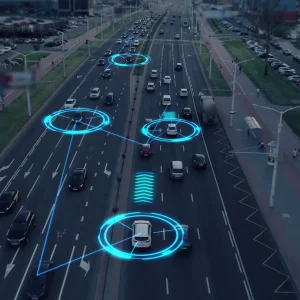Mayor of London Boris Johnson has announced bold new plans for a world-first ultra low-emissions zone in the capital. Jack Carfrae reports on what that would mean for businesses and vehicle use in the city.
The capital’s Congestion Charge has now clocked up a decade in operation, while any business with commercial vehicles operating in and out of the Greater London area will be more than familiar with the Low Emissions Zone (LEZ).
In February, London announced that it was getting even more serious about cleaning up its act with plans to create the world’s first ultra low-emissions zone. In a speech at City Hall, mayor Boris Johnson said the move, which encompasses numerous tweaks to existing air quality, transport and other policies, would “deliver dramatic benefits in air quality” and encourage the take-up of plug-in vehicles in the city.
Addressing delegates, he said: “My vision is a central zone where almost all the vehicles running during working hours are either zero or low emission. This would deliver incredible benefits in air quality and stimulate the delivery and mass use of low-emission technology.”
Transport for London has been tasked with investigating plans for a scheme of a similar ilk to the Congestion Charge that would mean all vehicles driving in central London during working hours would have next to no emissions. No specific plans or legislation have been set out, but the mayor has expressed his keenness to have such a scheme up and running by 2020.
Johnson claimed the move would deliver “double the benefits” in air quality that had previously been forecast as a result of the next stage of the London LEZ – phase five – which is due to come into force in 2015 and which further reduces emissions levels. He declared, too, that phase five will now only apply to TfL’s fleet of buses, not to all vehicles as had previously been the case, claiming businesses operating
in the Greater London area stood to save £350 million in costs. The mayor also pledged an additional £20 million on a scheme to target local air quality “hotspots”.
Question mark?
While a £350 million saving from not having to adhere to costly new legislation changes will be music to the ears of any business operating a fleet of vehicles within the capital, the alteration to the city’s outgoing policy leaves a serious question mark over the validity of phase five of the LEZ, namely how ambitious improvements in air quality will be achieved if buses are the only vehicles to succumb to tighter emissions regulations.
There is also the issue with the number of electric vehicles on UK roads, and whether this will have grown to an extent whereby such a scheme would be relevant at the end of the decade. In response to this, the mayor’s office says: “The Mayor recognises that more work is required and believes his proposal will act as a challenge for vehicle manufacturers to ensure more affordable and low-emission technologies are in place.”
Nevertheless, London authorities maintain the move has the capacity to drastically reduce air pollution.





